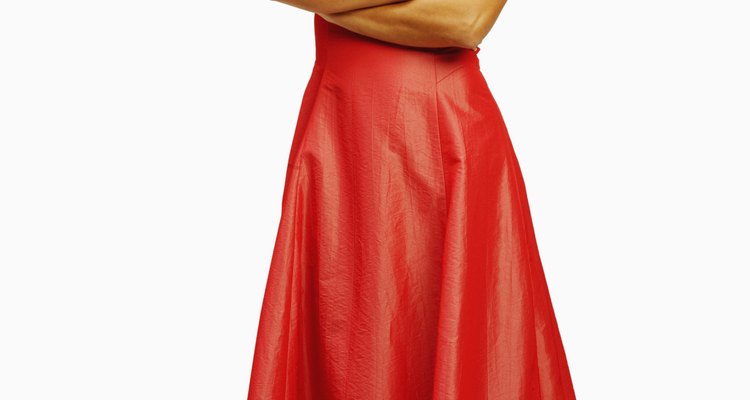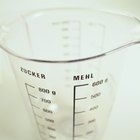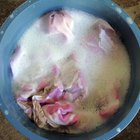
Whether it is an old wedding gown or a bridesmaid dress, think twice before you toss fancy dresses into the donation pile based on their color alone. Fabric tints can change the entire look of a garment while you save money by dyeing silk and lace fabrics at home. Natural fibers such as silk and certain varieties of lace require special attention and care during the dye process to achieve uniform results without damaging their fragile fibers. Carefully selecting the right dye and following the dye instructions are pertinent for successful color-changing results.
Select a silk or lace color dye based on the desired result. Most fabric dyes require one packet per pound of dry weight fabric. Purchase enough dye as necessary.
Prepare dye bath as instructed on dye package. Most silk and lace dyes will require the addition of an additive such as salt or vinegar.
Put on your rubber gloves and empty the dye packet and additives into the stainless steel pot.
Carefully add enough near-boiling water to fully submerse the lace or silk dress below the water line.
Stir the dress in the dye mixture using a pair of wooden tongs or a wooden spoon. Maintain the water temperature by adding more hot as needed.
Remove the dress with tongs from the dye bath when desired color is achieved. Silk will grab color dye very quickly so be sure to watch the dye process carefully. The longer a garment is immersed in dye, the more intense the end color will be.
Place dress in a large tub or sink filled with warm water. Using your spoon, agitate the dress and repeat as needed until the water runs clear. This may mean filling up a tub or sink with rinse water several times.
Rinse dress one last time in a cool water bath. As an alternative, you may select the rinse cycle on your washing machine and put your lace or silk dress in a mesh garment bag to avoid potential damage to the delicate fiber or lace detailing.
Hang dry your dress out of direct sunlight and heat. Once it is dry, you may press it with a low heat iron or send it to the cleaners for a professional pressing.
Related Articles

How to Dye a White Dress

How to Dye a Satin Dress

How to Dye a Black Dress

How to Dye Faded Clothes

How to Dye a Silk Dress

How to Dye Cotton Pants

How to Wash a Velvet Dress

How to Stretch My Dress

How to Dye Tulle

How to Wash Dupioni Silk

How to Make My Yellowed Wedding Dress ...

How to Clean a Taffeta Dress

How to Wash a Tulle Fabric Party Dress

How to Dye Fabric Using Kool-Aid & ...

How to Dye a White Bra Tan

Care of Satin Fabric

How to Dye a Fleece Jacket

How to Dye Pantyhose

How to Dye Faded Black Dress Pants

Can You Bleach a Tan Dress White?
References
Writer Bio
Jodie Michalak is a writer, editor and beauty expert. A licensed cosmetologist, she covers fashion, beauty and style for various online publications.
Photo Credits
Jack Hollingsworth/Photodisc/Getty Images